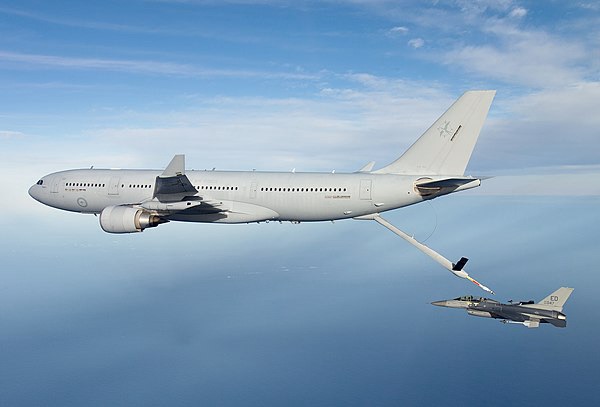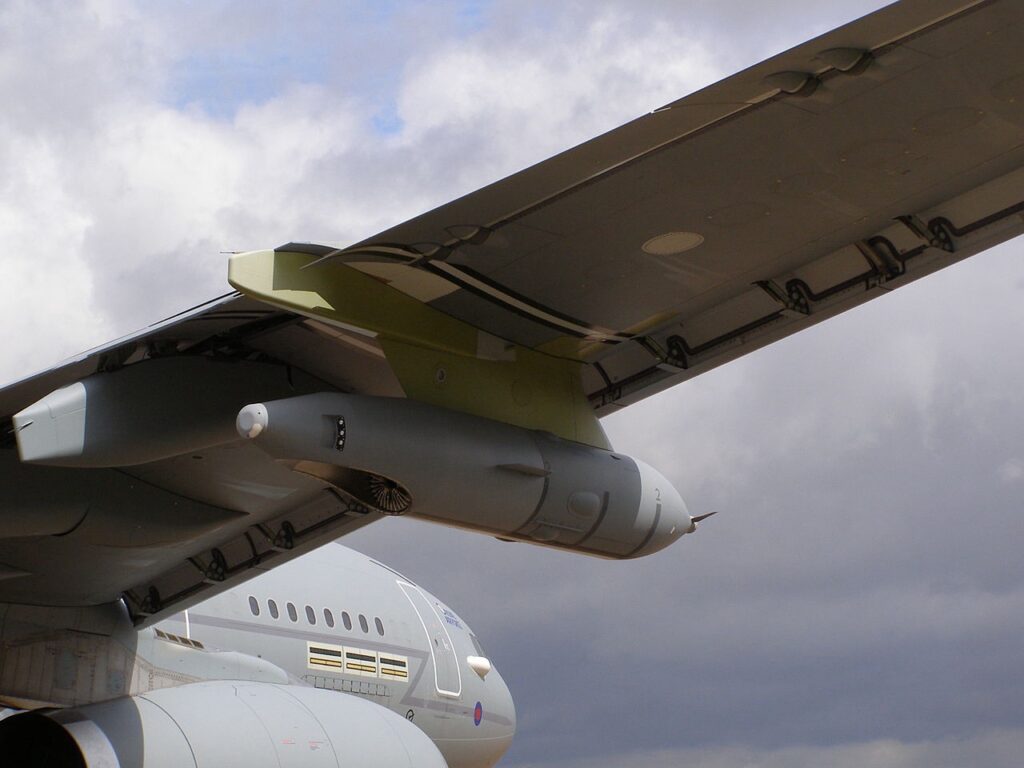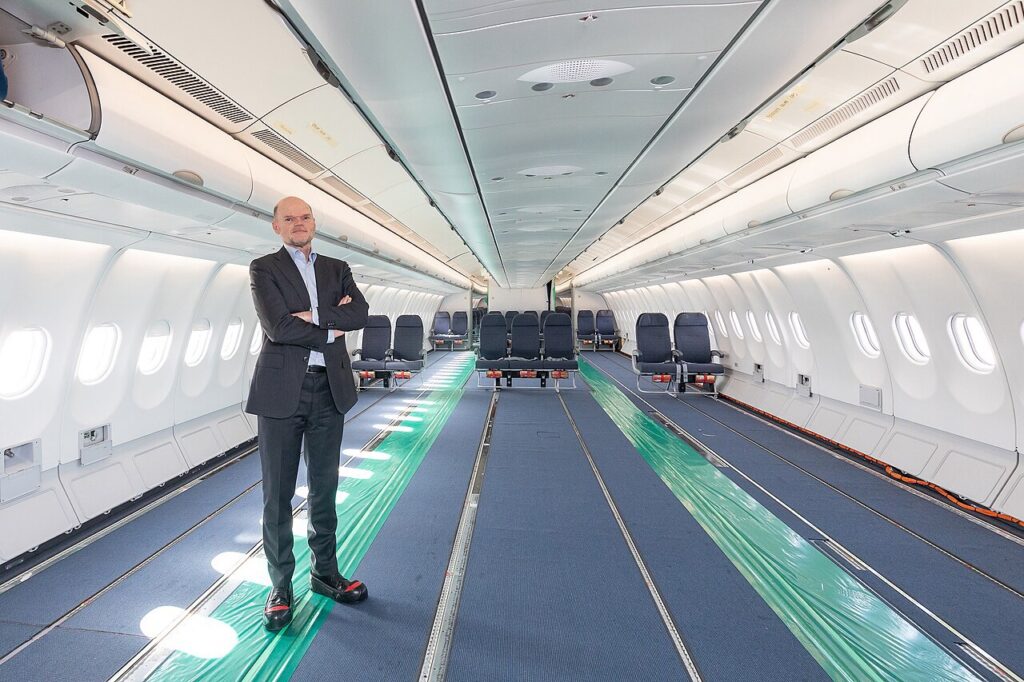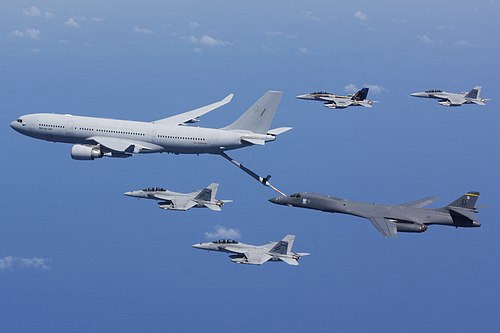In the world of modern military aviation, aerial refueling is a game-changing capability that enables global reach, sustained air operations, and unmatched flexibility. While often overlooked by the public, it is essential for extending the range of fighter jets, enabling long-range bomber missions, and enhancing the efficiency of strategic airlift. At the forefront of this critical mission stands the Airbus A330 MRTT (Multi Role Tanker Transport)—a proven leader in aerial refueling technology. Now, with the introduction of the advanced MRTT+, Airbus is ushering in a new era of fully autonomous, network-enabled air support operations, setting the benchmark for next-generation refueling platforms.

How the Airbus A330 MRTT Redefined Aerial Refueling: The Birth of a New-Class Multi-Role Tanker
The development of the Airbus A330 MRTT began in the early 2000s, driven by a growing need to replace aging aerial refueling aircraft like the Boeing KC-135 Stratotanker and Lockheed L-1011 TriStar. While these legacy tankers were still widely used, they lacked modern efficiency and upgrade potential. Airbus identified the A330-200 commercial airliner as an ideal foundation—offering twin-engine fuel efficiency, extended range, a wide-body fuselage, and a structurally resilient airframe—making it perfectly suited for transformation into a next-generation multi-role tanker transport.

To meet the demands of modern air operations, Airbus Defence and Space launched a comprehensive conversion program to transform the A330-200 into a fully capable military aerial tanker. The result was a platform that could carry up to 111 tonnes of fuel internally, utilizing its expansive wing and center wing box tanks. This innovative design eliminated the need for additional fuselage fuel tanks, thereby preserving the aircraft’s full cargo hold for troop transport, military cargo, or aeromedical evacuation missions. The A330 MRTT’s multi-role flexibility quickly set it apart as a force multiplier for air forces around the world.
First flight took place in 2007, and Australia was the launch customer under the KC-30A designation. Airbus designed the MRTT to be modular and scalable, capable of adapting to customer-specific communications suites, defensive aids subsystems (DASS), refueling packages, and medical modules.
By 2025, over 75 Airbus A330 MRTT aircraft were in service or on order, operated by nations including Australia, the United Kingdom, Saudi Arabia, France, the UAE, Singapore, South Korea, and the NATO Multinational MRTT Unit (MMU)—establishing it as the global standard in aerial refueling and air mobility support.
Refueling Architecture: Dual Systems for Global Interoperability
One of the defining features of the A330 MRTT is its dual refueling architecture. This includes the ARBS (Advanced Refuelling Boom System)—a 17-meter fly-by-wire, articulated telescopic boom capable of delivering 1,200 gallons per minute—and two Cobham 905E under-wing pods, each with a 420 gallons per minute hose-and-drogue system for NATO probe-equipped aircraft. An optional centerline fuselage refueling unit (FRU) is available for increased capacity or to support simultaneous multi-point refueling.

The ARBS is controlled via a refueling operator station (ROS) behind the cockpit. This suite features 3D high-definition stereoscopic vision, low-light and IR-enhanced imagery, and tactile fly-by-wire controllers. The system can maintain a precise position and contact envelope even in turbulent conditions, supporting dynamic offloads to large aircraft like C-17s, or fast jets like Rafales, Typhoons, and F-15s.
The MRTT’s system is uniquely capable of simultaneously refueling two fighters from pods and a large receiver via boom, achieving high sortie regeneration and loiter capabilities in forward theaters. This is especially critical in island-hopping, expeditionary, or NATO allied ops where tankers act as force enablers, not just fuelers.
Mission Flexibility: Strategic Lift, Medevac, and Command Node
The A330 MRTT is more than a flying gas station. The aircraft’s widebody configuration allows for rapid reconfiguration depending on mission requirements. The main deck can carry:
- Up to 300 troops in economy-style seating
- 37 tonnes of cargo in underfloor ULDs or NATO-standard 463L pallets
- A fully configured medevac setup with up to 130 stretchers, including 8 ICU modules, with in-flight life support
- A command and control module capable of operating as a battle staff node with real-time SATCOM and secure data links
The underfloor cargo hold remains usable even during refueling missions, allowing commanders to run dual-role operations—fueling and cargo movement—in a single sortie. Moreover, the aircraft’s unrefueled range of 14,800 km puts most of the globe within reach from a handful of bases, offering near-unparalleled strategic reach.

MRTT+: The Evolution Toward Autonomy and Combat Cloud Integration
The future is already here with the MRTT+ upgrade path—a blend of AI-enhanced automation, advanced connectivity, and integrated warfare networking that turns the tanker from a logistics platform into an autonomous battle asset.
At the heart of MRTT+ is the A³R (Automatic Air-to-Air Refuelling) system. This uses a suite of onboard sensors, machine learning algorithms, and computer vision to perform autonomous boom contacts without operator intervention. Airbus has demonstrated fully automated engagements with F-16s and A330s, and plans to expand it to support 5th-gen aircraft like the F-35 and next-gen UAVs.
MRTT+ also brings:
- Cloud-centric communications, allowing the aircraft to act as a secure node within the NATO Combat Cloud or future FCAS/NGAD battle networks
- Edge computing capabilities to process, fuse, and relay data from satellites, fighters, and ground stations
- Upgraded Defensive Aids Sub-System (DASS) including DIRCM, MAWS, radar warning receivers, and electronic warfare jamming
- Fully modernized cybersecure avionics architecture, hardened against electronic and software-based threats
- UAV control compatibility, enabling manned-unmanned teaming (MUM-T) as a future option
These features make MRTT+ the only large-body tanker currently being prepared to operate as a C2 (Command and Control) relay, supporting dynamic targeting, UAV operations, and digital force coordination in real-time.
Technical Specifications Table: A330 MRTT vs MRTT+ vs KC-46 Pegasus
| Feature | A330 MRTT | MRTT+ | Boeing KC-46 Pegasus |
|---|---|---|---|
| Base Airframe | Airbus A330-200 | Airbus A330-200 + A³R + Combat Cloud Upgrades | Boeing 767-2C |
| Max Fuel Capacity | 111,000 kg (245,000 lb) | Same (internal tanks only) | 96,000 kg (212,000 lb) |
| Boom Type | ARBS (Manual, HD 3D) | A³R Autonomous Boom | Manual Boom (RVS 1.5) |
| Boom Offload Rate | 1,200 gal/min | 1,200 gal/min (autonomous) | 1,200 gal/min |
| Drogue Pods | 2x Cobham 905E (420 gal/min each) | Same | 2x Hose-and-Drogue (400 gal/min) |
| Fuel Offload Flexibility | Simultaneous multi-type refueling | Same + AI-Optimized Sequencing | Sequential Only |
| Cargo Payload | 37 tonnes | 37 tonnes | 29 tonnes |
| Troop Capacity | 300 | 300 | 114 |
| Medevac Capacity | 130 stretchers + ICU | 130 stretchers + ICU | Limited |
| Avionics | Digital FBW, Multi-Mode ROS | AI-Fused, Edge Compute, Cyber-Hardened | Legacy + Digital RVS (flawed) |
| Automation | Manual with assisted controls | Fully autonomous (A³R) | Manual |
| Communications | Secure VHF/UHF/SATCOM | Combat Cloud Node, SATCOM Relay, UAV Control (future) | Tactical Datalinks |
| Defensive Systems | Optional DIRCM, MAWS, RWR | Enhanced DIRCM, Jamming, Threat Avoidance AI | Optional LAIRCM |
| Unrefueled Range | ~14,800 km | ~14,800 km | ~12,200 km |
| Cruise Speed | Mach 0.82 | Mach 0.82 | Mach 0.80 |
| Service Ceiling | 41,000 ft | 41,000 ft | 40,000 ft |
| Entry into Service | 2011 | 2025+ (retrofit & forward build) | 2019 |
| Unit Cost (Est.) | $250–300 million | $280–320 million | ~$220 million |
Global Operational Impact
With its fleet deployed across Europe, Asia-Pacific, the Middle East, and with NATO’s Multinational MRTT Unit (MMU), the A330 MRTT has proven its worth in real-world contingencies including Afghanistan, Iraq, Syria, and humanitarian missions during COVID-19. Operators routinely report >95% availability rates, and the platform is praised for its maintainability and training commonality with civilian A330 fleets.

NATO’s MMU alone plans to operate a pool of 10 MRTTs, all interoperable with national assets and mission-tasked according to need. MRTT’s presence in both Pacific and European theaters makes it a backbone of transatlantic and Indo-Pacific mobility for years to come.
Final Thoughts: More Than a Tanker
The Airbus A330 MRTT is not merely a product—it’s an architecture. With the MRTT+, it becomes not only a strategic enabler, but a cognitive extension of the air battle network, capable of operating autonomously, communicating across domains, and adapting to threats in real time.
For aviation professionals, engineers, and tacticians, the MRTT+ is a testament to what happens when aerospace innovation, digital transformation, and operational foresight converge at altitude. It doesn’t just support air power—it amplifies it.